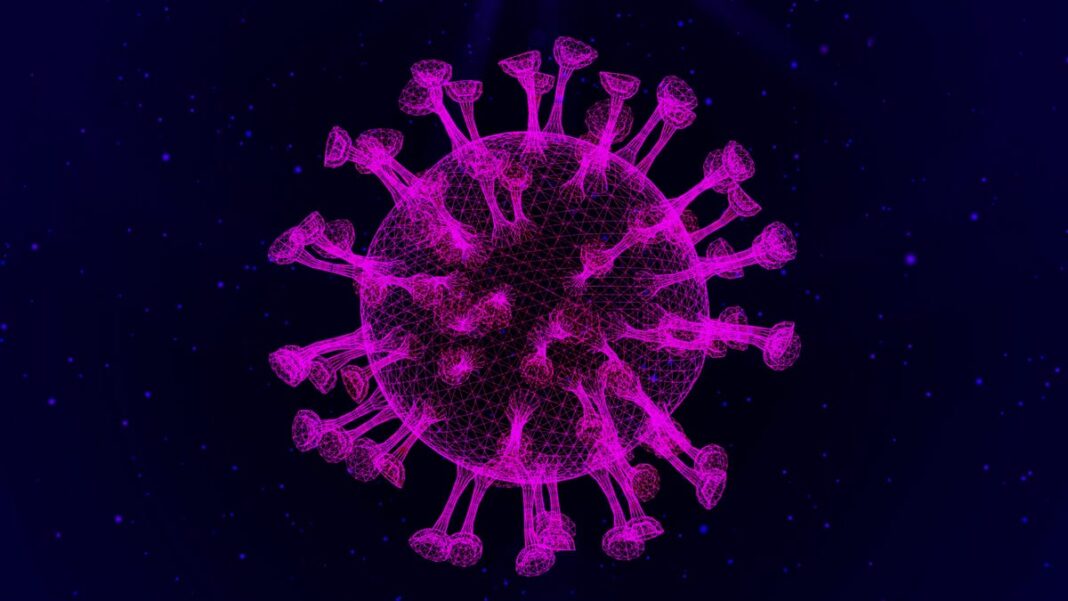COVID-19 XEC variant is currently spreading in the US. Here’s what you need to know about it.
The KP.3.1.1 variant remains the leading COVID-19 variant in the United States, representing nearly 60% of positive cases, according to the latest data from the Centers for Disease Control and Prevention (CDC).
“The CDC is keeping track of the XEC variant,” said Rosa Norman, a spokesperson for the CDC, to YSL News. “XEC is the name for a recombinant or hybrid variant that comes from the related Omicron lineages KS.1.1 and KP.3.3.”
Initially detected in Berlin in late June, the XEC variant has led to hundreds of reported cases in Germany, France, Denmark, and the Netherlands, as noted by Mike Honey, a data specialist based in Australia.
The CDC’s Nowcast data tracker indicates that as of the two-week period ending on October 12, the KP.3.1.1 variant comprised 57.2% of positive cases, while XEC accounted for 10.7%.
The KP.3.1.1 variant emerged as the dominant variant for the first time between July 21 and August 3.
Recent statistics reveal that both KP.3.1.1 and XEC saw increases in their percentages of total cases from September 15-28, with KP.3.1.1 rising by 4.6%, and XEC by 5.4%. Previously, KP.3.1.1 represented 52.6% of cases, while XEC held 5.3% for that period.
Here’s a summary of essential information regarding the XEC variant and the most recent CDC data.
Current COVID-19 Wastewater Viral Activity Levels Map
Note: Wastewater data is typically refreshed weekly and represents results from the previous week. However, it may take up to a week for results to be made public. Hence, data from October 5 is the latest available.
Here’s a summary of the viral activity levels across states and territories:
- Very High: Two states
- High: 14 states
- Moderate: 11 states
- Low: 15 states
- Minimal: Seven states; one territory
- No Data: One state; one territory
Weekly Changes in COVID-19 Test Positivity
CDC data shows a general decline in positivity rates, with Region 10 experiencing the largest drop in positive COVID-19 cases (-2.7%) between September 29, 2024, and October 5, 2024.
This data was shared on October 11.
Note: The CDC tracks positivity rates by regions, as classified by the U.S. Department of Health and Human Services.
Here’s a breakdown of the changes in COVID-19 positivity rates across various regions over the past week:
- Region 1 (Connecticut, Maine, Massachusetts, New Hampshire, Rhode Island, and Vermont): -2%
- Region 2 (New Jersey, New York, Puerto Rico, and the Virgin Islands): -1.9%
- Region 3 (Delaware, District of Columbia, Maryland, Pennsylvania, Virginia, and West Virginia): -1.3%
- Region 4 (Alabama, Florida, Georgia, Kentucky, Mississippi, North Carolina, South Carolina, and Tennessee): -0.6%
- Region 5 (Illinois, Indiana, Michigan, Minnesota, Ohio, and Wisconsin): -2%
- Region 6 (Arkansas, Louisiana, New Mexico, Oklahoma, and Texas): -0.8%
- Region 7 (Iowa, Kansas, Missouri, and Nebraska): -1.7%
- Region 8 (Colorado, Montana, North Dakota, South Dakota, Utah, and Wyoming): -1.2%
- Region 9 (Arizona, California, Hawaii, Nevada, American Samoa, Commonwealth of the Northern Mariana Islands, Federated States of Micronesia, Guam, Marshall Islands, and Republic of Palau): -1.3%
- Region 10 (Alaska, Idaho, Oregon, and Washington): -2.7%
The CDC reports that the COVID-19 test positivity rate was at 7.7% from September 29 to October 5, reflecting a decrease of -1.8% from the previous week.
COVID-19 Symptoms
According to the CDC, the leading variants present in the U.S. do not produce any unique symptoms.
“The CDC has not identified any new or unusual symptoms tied to the XEC variant or any other concurrently circulating SARS-CoV-2 strain,” Norman stated.
The CDC outlines the common symptoms of COVID-19 on its website. These symptoms may appear between two and 14 days after being exposed to the virus and can range in severity.
Here are some typical symptoms of COVID-19:
-
-
-
- Fever or chills
- Cough
- Difficulty breathing or shortness of breath
- Fatigue
- Aches in muscles or body
- Headache
- Loss of taste or smell
- Sore throat
- Runny or stuffy nose
- Nausea
- Nausea or vomiting
- Diarrhea
-
The CDC advises you to seek medical help if you experience any of the following symptoms:
-
-
- Difficulty breathing
- Ongoing pain or pressure in the chest
- New confusion
- Difficulty waking up or staying awake
- Pale, gray, or blue skin, lips, or nail beds
-
-

